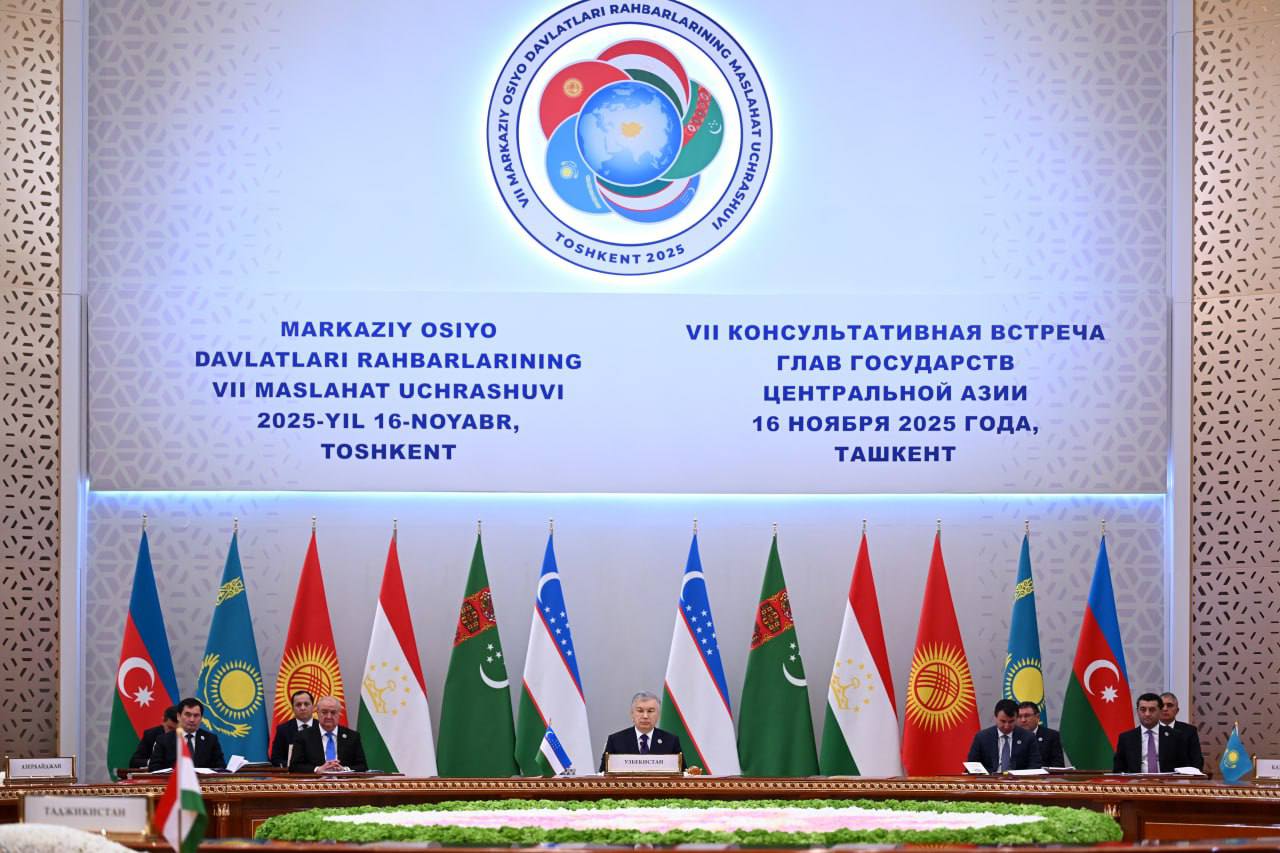
On 15-16 November 2025, Tashkent hosted the Seventh Consultative Meeting of the Heads of State of Central Asia, marking a new stage in the history of the region. The meeting was opened by the President of Uzbekistan, Shavkat Mirziyoyev, and was attended by the leaders of Kazakhstan, Kyrgyzstan, Tajikistan, Turkmenistan, as well as the President of Azerbaijan as a guest. The final communiqué announced the decision on Azerbaijan’s full accession to the Consultative Meeting format as a full-fledged member. This decision has opened up new opportunities for geo-economic and strategic cooperation along the Central Asia–Caspian–Caucasus axis.
On the eve of the summit, President Shavkat Mirziyoyev published an article titled “Central Asia on the Verge of a New Era,” in which he outlined clear ideas regarding a development model based on shared regional interests, a joint approach to address security challenges, and the necessity of deepening integration processes. The strategic principles reflected in the President’s article - stability, harmony, openness, and mutually beneficial integration - formed the foundation of the summit’s political agenda.
One of the key initiatives of the Tashkent summit was the proposal to set up for the “Community of Central Asian” format. This model envisions the establishment of an institutional basis for regional cooperation and the transformation of the Consultative Meetings into a structure with a permanent operational mechanism. The creation of such an institution is expected to contribute to the formation of a new, institutionalized framework for cooperation in Central Asia.
Economic issues were central to the summit agenda. The President of Uzbekistan proposed the elaboration of a regional trade and economic programme until 2035. This programme includes tasks aimed at creating favourable conditions for the free movement of goods, services, and capital; establishing a unified investment space; harmonizing e-commerce infrastructure; and organizing joint industrial cooperation centres. These ideas are also presented in detail in the President’s aforementioned article, underscoring the strategic goal of shaping the region as a single market.
In the sphere of transport and logistics, agreements were reached on expanding cooperation along the International Trans-Caspian Corridor, the China-Kyrgyzstan-Uzbekistan railway line, as well as routes linking Turkey and Europe through Azerbaijan.
In our view, these initiatives have the potential to enhance Central Asia’s role as a significant actor on the global transit map.
The summit also devoted considerable attention to issues of water and climate security. The proposal to declare 2026-2036 as the “Decade of Practical Actions for the Rational Use of Water in Central Asia,” as well as the initiative to establish a regional centre of competence in water resource management in Tashkent, represent important steps toward ensuring the region’s environmental sustainability. These initiatives aim to provide sustainable solutions to transboundary water challenges and to develop strategies for climate change adaptation.
In the field of security, the adoption of the “Concept of Regional Security and Stability in Central Asia” and the 2026-2028 risk catalogue establishes a framework for assessing common regional threats based on a unified methodology. Coordinated measures were identified to counter key threats, including terrorism, extremism, cybersecurity, drug and human trafficking, migration, and water-climate challenges. This document is expected to play a crucial role in shaping an interconnected mechanism of cooperation on regional security issues.
In the sphere of cultural and scientific cooperation, the President proposed holding an annual international congress on spiritual heritage and education, as well as adopting a special the UN General Assembly resolution recognising the contribution of the region’s prominent scholars and intellectuals to the development of global knowledge. This initiative aims to shape the region not only as an economic or political entity, but also as a community that strengthens spiritual and scientific unity.
Overall, the Seventh Consultative Meeting in Tashkent outlined new strategic directions for the geopolitical, economic, and cultural development of Central Asia. Azerbaijan’s accession expanded the format and opened new opportunities for logistics, trade, and political cooperation in the region.
The practical implementation of these initiatives will enable Central Asia to become a stable, interconnected, and actively engaged strategic space within global geopolitical and geo-economic processes in the coming decades.
M.Mamajonova
Leading Specialist Information Resource Center
Diplomatic Academy under the University of World Economy and Diplomacy